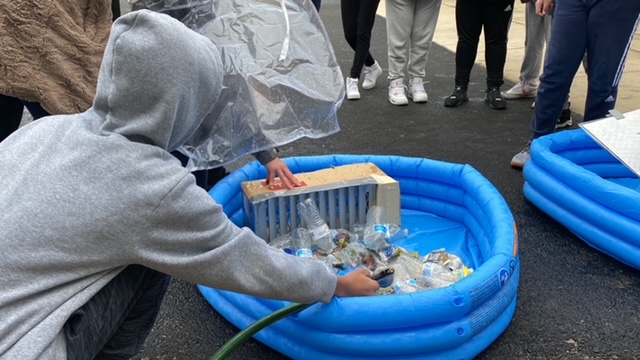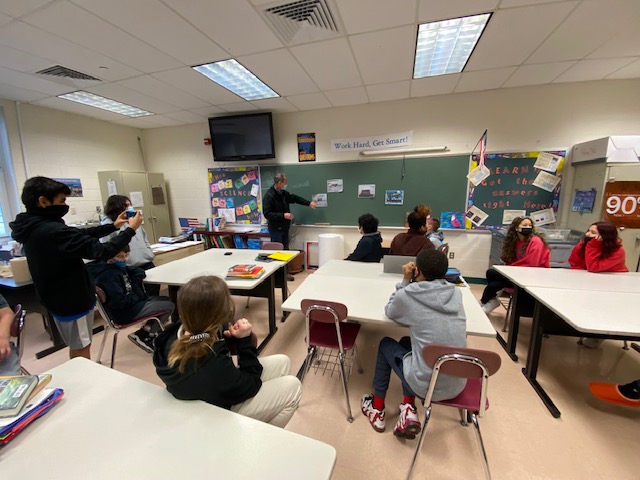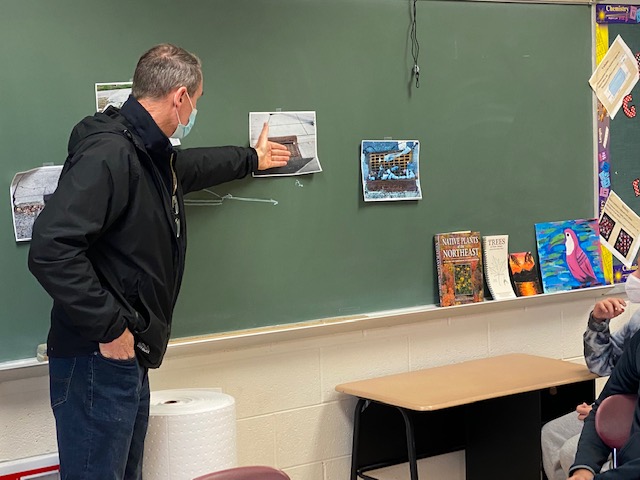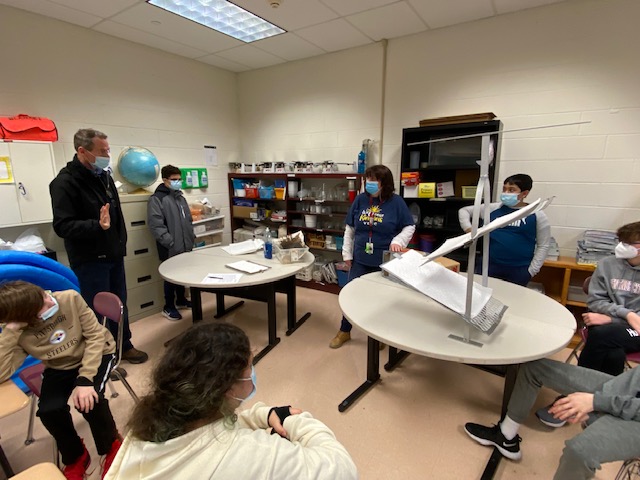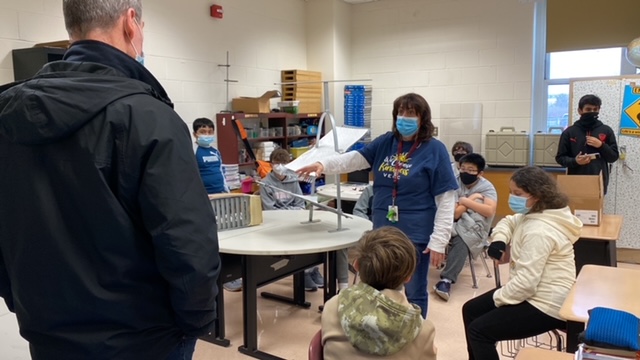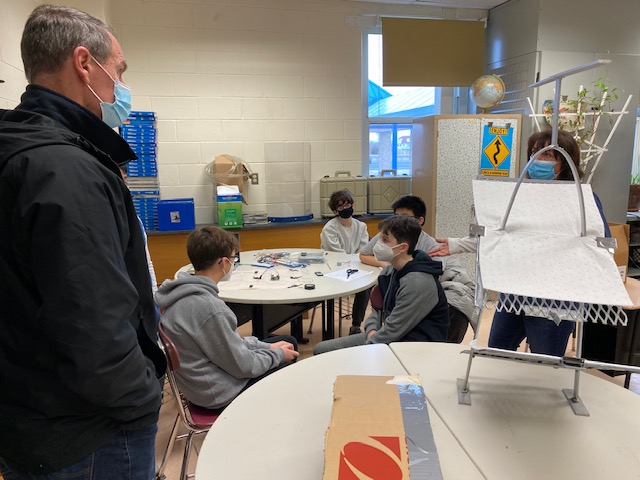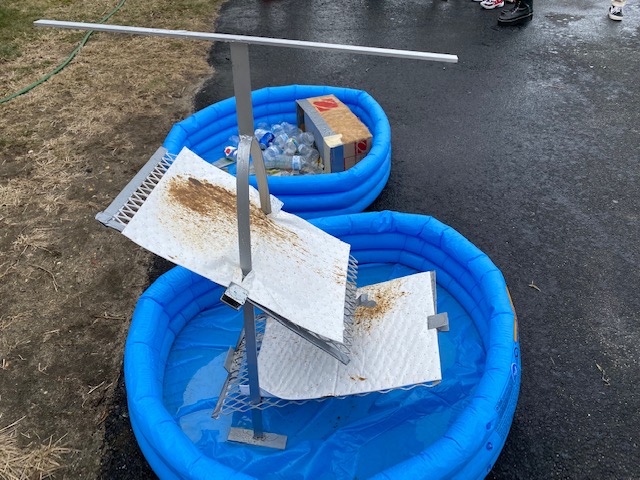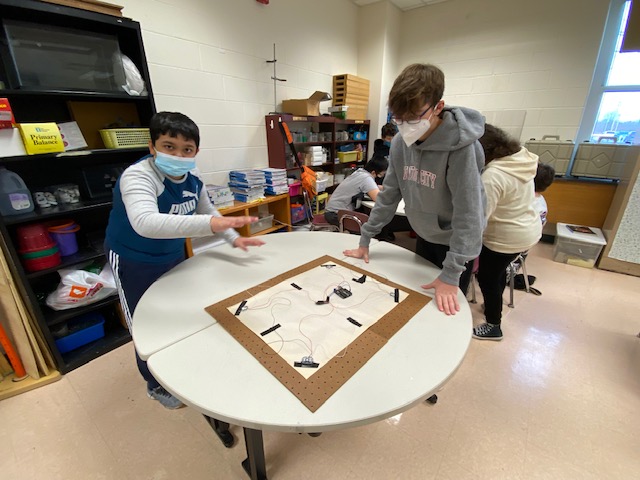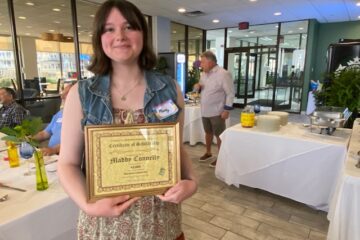By NANETTE LoBIONDO GALLOWAY
VENTNOR – Sixty-three seventh graders at the Ventnor Middle School are working hard to solve the problems of the future. Under the leadership of science teacher Dona Hehre, the students have gone underground to eliminate waste and oil from Ventnor’s stormwater management system.
The project started in October when Hehre applied to the Samsung Corporation’s Solve for Tomorrow contest. She was notified in December that the school was a state winner and was awarded $6,500, a new Samsung phone and a computer for the first phase of the contest. The school is one of 100 state winners across the country to be recognized in the first round of the national contest. Winners of the next phase of the contest will receive a $10,000 award for an environmental impact project. Additionally, 10 national finalists with the best projects will be chosen from among the 100 and will each receive a $50,000 award. They then become eligible to compete for the top prize of $100,000.
Samsung has been conducting the contest for the last 12 years, encouraging teachers to lead the charge in inspiring students to think of ways to build a smarter community.
“It’s total STEM,” she said.
Students are learning concepts such as how to take measurements, water testing, mathematics, design, technology and presentation skills.
Hehre said she first approached the contest asking one of her science classes to come up with ideas about how they can help make a better world. When students in other classes started offering more great ideas, she decided all the seventh grade science classes should have the opportunity to participate. Some of the best suggestions came from students who are not normally tops in science class, and all of them had great ideas, she said, calling it a “learning opportunity of a lifetime.”
“This is the most amazing thing I’ve ever done in class,” Hehre said. “I’m losing sleep over it, but the kids are really into it. They are noticing things that can be changed for the better everywhere they go.”
Hehre said it’s more difficult to work with a larger group, but she is learning so much from her students and the students are so engaged that it’s worth it.
The students worked in groups after school to come up with two prototypes that will eliminate trash, debris and motor vehicle oil that flows into storm drains when it rains. The first, a wire mesh and louvered mechanism that can be attached to the culverts that do not have grates will not only hold back plastic water bottles, paper and other debris, but it will also prevent ducklings from falling into the drain.
On Thursday, Ventnor Public Works Supervisor and City Engineer Ed Stinson attended her 8:30 a.m. science class to educate students about the two different types of storm drains in Ventnor that move rainwater – either by gravity or in underground pipes – and bring it to the bay. All of Ventnor’s stormwater flows to the bayside, he explained. As an engineer, he was eager to learn what the students have devised.
Members of the Public Works Department are responsible for regularly cleaning the drains, “but it’s everybody’s job to keep trash out of the storm drains,” he said.
Stinson noted that several years ago, the city purchased 95-gallon trash and recycling containers with hinged lids for every residence to help trash from blowing and reduce inflow, and that the city’s trash and recycling collection numbers have increased since then.
Students moved to the schoolyard to demonstrate how the two prototypes work. The students placed trash and torn up papers in a small inflatable swimming pool and used a garden hose to move the trash toward the contraption. The louvers held the trash away from the mesh screen, which allowed only the water to flow into the box. It worked perfectly.
The second prototype included two sections of filtering fabric. A student filled a jug with water and a little bit of used motor oil, and poured it over the mat, which absorbed the oil and allowed the water to flow.
A roll of the fabric stood on end at the front of Hehre’s classroom. She said the fabric contaminated with oil can be incinerated and used as fuel.
Students Aveek Roy and Cole Hewett demonstrated an electronic sensor they are working on that can alert authorities when the pad is saturated with oil and needs to be replaced. The sensor will judge the weight of the pad and set off an alarm.
Although some oil can seep through, each pad can collect up to three-quarters of a cup of oil.
Stinson said the pads would likely need to be changed after every rain event.
The students will next work on how to waterproof the wires and sensor boards, Hehre said.
As part of their project, students reached out to the Ventnor Green Team and presented their concept at a Zoom meeting. The students are also documenting their project and progress in a video that will be submitted to Samsung.
Stinson said he thinks the project could be implemented in a storm drain near the school’s large parking lot, which is located close to the bay.
“Parking lots are big culprits in contaminating stormwater,” he said.
“It’s amazing how much stuff goes into the bay,” seventh grader Hayden Sarno said.
Amelia Percy said the oil and trash can have a negative impact on marine life.
“We are depending on you young folks to save the planet,” Stinson told them.
Hehre said she is focused on winning the entire competition, not just for the monetary awards, but to see all her students recognized for their hard work and collaboration.
“All of them should be able to get recognition that they can put into their school resumes for when they choose a high school,” she said.
In a discussion with Principal Rob Baker, Hehre said there is no downside if her wish does not come true.
“If we don’t win, we didn’t lose, because what they learned is so overwhelming,” she said.
Copyright Mediawize, LLC 2022
